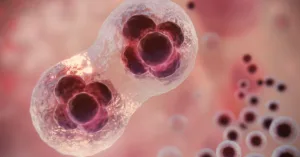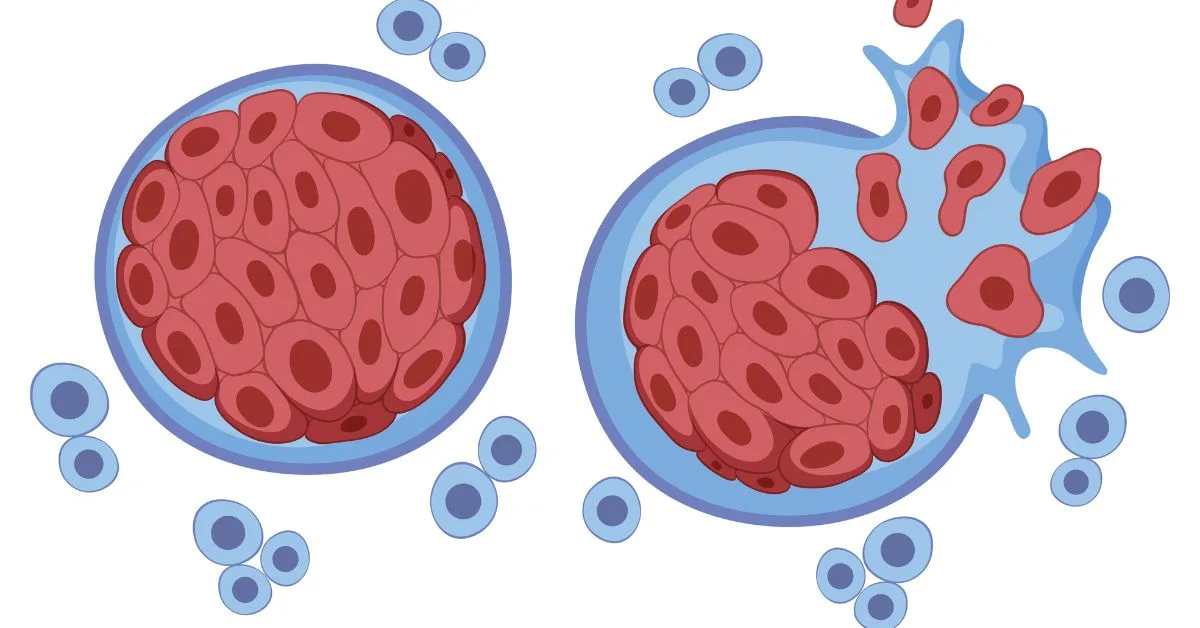Title: Mastocytosis Life Expectancy
Introduction:
A rare condition known as mastocytosis is defined by an abnormal build-up of mast cells in different body tissues. For those who have been diagnosed with mastocytosis, knowing how the condition affects life expectancy is important, considering it can affect both adults and children. We will discuss mastocytosis, its possible impact on life expectancy, and ways that people can improve their quality of life while managing the illness in this blog post.
What Is Mastocytosis?
The condition known as mastocytosis comes on by the wildly high growth of mast cells, an immune cell variant that is in control of secreting histamines and other chemicals during allergic reactions. These cells can build up in the gastrointestinal system, bones, skin, and other organs, resulting in a variety of symptoms such as fatigue, rashes on the skin, and stomach pain.
Mastocytosis Life Expectancy:-
Mastocytosis Life Exceptancy is depending on the kind and severity of the condition, mastocytosis can have a wide range of effects on life expectancy. It’s crucial to remember that mastocytosis is typically regarded as a chronic illness compared to a serious one. When properly managed and treated, most people with mastocytosis can lead relatively normal lives.
Mast Cell Activation Syndrome and Mastocytosis:-
Mast cell disorders, or mast cell disease, include both mastocytosis and mast cell activation syndrome (MCAS). They are different from one another, however. Mast cell activation syndrome causes the mast cells to release too much histamine, which results in symptoms similar to allergies, while mast cellcytosis causes an excessive number of mast cells to multiplied.
How Does Mastocytosis Appear?
Worldwide, one to two persons per 20,000 suffer with mastocytosis. It is regarded as an uncommon illness. One may experience symptoms as an adult or in childhood. When the illness first manifests in childhood, symptoms typically strike babies before they turn one year old.
Many symptoms could indicate mastocytosis. The location of the mast cell buildup decides the symptoms.
Skin changes are among mastocytosis’s most common symptoms. These may consist of:
-Warm, red, and flushed skin
-Variations in skin tone, or patches of skin with a different tone than the rest of your body
-Skin discolorations that are macules, or flat and less than one centimeter across
-Itchiness is another name for itching.
-Hives
-Brown skin patches that are elevated are known as urticaria pigmentosa.
-Burning without a clear cause
What are Mast Cells?

White blood cells, or mast cells, are a component of the immune system in the body. Mast cells defend you by releasing substances that trigger an immunological response that is inflammatory. This aids in the body’s healing process when it occurs in reaction to an infection or injury.
However, in cases of mastocytosis, an excessive number of mast cells accumulate in one particular body region, such as the intestines, bone marrow, or skin. These organs may become inflamed and uncomfortable as a result. Mastocytosis is an immune system disorder even though it isn’t classified as an autoimmune disease.
Types of Mastocytosis
Two primary forms of mastocytosis exist:
Cutaneous Mastocytosis:
Skin is affected by cutaneous mastocytosis. It occurs when the symptoms listed above are brought on by an accumulation of mast cells in the skin. Adults with cutaneous mastocytosis may also have other symptoms, but skin-related symptoms are the most common. All ages can be affected by this type of mastocytosis, although it is more common in children than in adults.
Systemic Mastocytosis:
Anywhere in the body, mast cells can gather when a person has systemic mastocytosis. It’s possible for patients with this kind of mastocytosis to exhibit skin symptoms or not. Five subtypes of systemic mastocytosis have been identified, two of which are not life-threatening:
A. Indolent Mastocytosis: The most common and moderate form
B. Smoldering Mastocytosis: Individuals suffering from burning mastocytosis experience symptoms that are a little more severe than those of indolent mastocytosis and affect multiple organs.
Due to their potential to affect organ function, the other three types of mastocytosis are extremely dangerous. They may cause a reduction in life expectancy, though this varies greatly. If you fit any of these descriptions, find out from your healthcare provider what your prognosis is:
A. Aggressive Systemic Mastocytosis, which results in bone fractures and a decrease in bone density.
B. Systemic mastocytosis and hematologic neoplasm, a form of cancer of the blood.
C. Leukemia Mast Cell: A Blood Cancer Type.
What Causes Mastocytosis?
A genetic mutation that occurs during a fetus’s development causes mastocytosis. The illness does not run in families and is not passed on.
The KIT gene is connected to the mutation. Normally, this gene controls the production of a protein called KIT by acting as an on-off switch. But the KIT D816V mutation, which causes mastocytosis, flips the switch constantly. This implies that mast cells are constantly growing and active, leading to their accumulation within the body.
What Are Mastocytosis Symptoms?
Mastocytosis can also cause the following additional symptoms in addition to the skin ones mentioned above:
-Feeling worn out and exhausted
-Nausea
-Pain in the stomach
-Bloating
-The diarrhea
-Acid reflux
-Congestion
-Breathing difficulties
-low Blood Pressure
-Dizziness
-Headache
-Memory issues
-Depression
-Anxiety
-Severe allergic responses, such as anaphylaxis
What Could Set Off Symptoms of Mastocytosis?
Many mastocytosis sufferers discover that their symptoms worsen in response to specific triggers. Typical enzymes consist of:
-Bacteria
-Stings from insects
-Bright light Strong smells
-Abrupt variations in temperature
-Feelings
-Antibiotics
-Opioids
-Bacterial infections under stress
How Is Mastocytosis Diagnosed?
To diagnose mastocytosis, medical professionals usually begin with a physical examination. They’ll question you regarding your signs and causes. They are likely to order a biopsy if they think you have mastocytosis. They will request a skin biopsy if they believe there is skin mastocytosis. They will require a bone marrow biopsy if they have systemic mastocytosis.
During the biopsy, mast cell appearance and other blood markers indicative of an excess of mast cells are searched for. Your level of these markers indicates that you meet the diagnostic criteria for mastocytosis.
The diagnosis of mastocytosis may also be helped by blood tests.
Treatment for Mastocytosis:
The main goal of mastocytosis treatment at the moment is symptom management. However, scientists are trying to create focused treatments that can deal with the underlying cause of the illness.
Treatment options for mastocytosis consist of:
A. To reduce itching and other skin symptoms, use moisturizers and follow a skin care routine.
B. Inhibitors of histamine.
C. Drugs known as “mast cell stabilizers” that aid in regulating the quantity of mast cells in a specific area of the body.
Healthcare professionals may suggest immunological system treatments and chemotherapy in more serious cases. Additionally, some treatments target particular systems. For example, blood transplants are used to treat anemia, and osteoporosis medications are used to combat bone loss caused by mastocytosis.
Complications of Mastocytosis:
Mastocytosis could be a serious threat. It’s critical to collaborate with your healthcare provider to manage symptoms if you have the condition. Osteoporosis, depression, blood cancer, and other severe conditions can result from severe forms of mastocytosis. You can maintain your health by receiving early intervention and managing any other conditions that result from your mastocytosis.
Summary:
An essential component of the immune system are mast cells. However, if your body continues to produce mast cells, a buildup of them in your organs can result in mastocytosis. The most typical signs of mastocytosis are skin symptoms like eliminating and itchy skin. The illness can also affect other organs and ultimately end in blood cancer.
If you have mastocytosis, discuss with your doctor how to manage your symptoms by avoiding triggers (like heat, certain foods, or pollutants) and following to a treatment plan. Mastocytosis typically has no effect on life expectancy. Speak with your doctor about your individual the future and outlook if you’re feeling nervous or overwhelmed by the diagnosis.
FAQ: Mastocytosis Life Expectancy
Is It Possible to Stop Mastocytosis?
Since mastocytosis is caused by an early pregnancy gene change, there is no known cure for the illness. You can, however, take steps to manage your symptoms. Leading clear of triggers is the best way to achieve that. It takes practice and time to figure out what triggers a symptom an outbreak. Another option is to collaborate with your medical professional (or treatment team) to create a plan of care that will help manage your symptoms.
What Opportunities Are There for Those Who Have Mastocytosis?
The majority of mastocytosis patients have moderate symptoms. By avoiding causes and taking medication, they can manage their symptoms without compromising their ability to live. On the other hand, more severe cases of systemic mastocytosis can be fatal. Due to the wide range of severity associated with this condition, it’s critical to be transparent and honest with your healthcare team about your individual prognosis. You can find out more information about the illness by getting in touch with these organizations: A. The Society for Mast Cell Disease B. The Foundation for Rare Diseases at EveryLife C. The U.K. Mastocytosis Support Group
